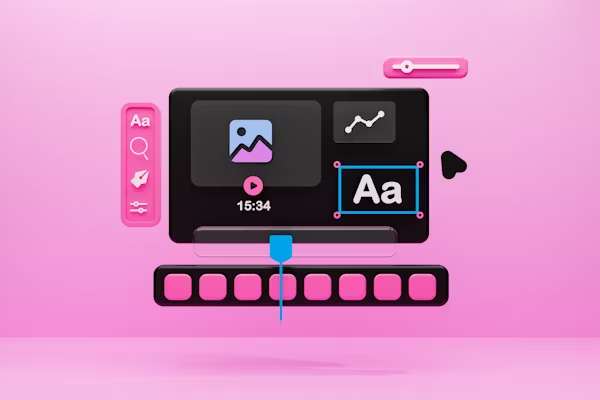The Rise of Neobrutalism: Love It or Hate It?

The rise of Neobrutalism feels like a slap across the face of perfection. It mocks symmetry and welcomes the ugly, the chaotic, and the bold. It thrives on discomfort. It wants you to feel something, even if that feeling is confusion or shock.
But what exactly is this strange creature of design? Why has it crawled from the depths of digital rebellion to dominate creative screens? And more importantly, should you use it or not for your web design in Melbourne?
Defining Neobrutalism
Neobrutalism in web design strips away illusion. It rips off the mask of minimalism and refuses fake harmony. It presents the internet at its rawest. Sharp edges, clashing colours, unaligned text, and oversized buttons, these define its soul.
This style rejects comfort and celebrates directness. It flaunts bold typography and unfiltered visuals. It often looks like a digital version of a protest poster. It makes viewers pause while demanding attention for your web design in Melbourne.
Why Neobrutalism Emerged
Perfection fatigues the eye. For years, the web worshipped minimalism. Clean interfaces ruled every brand. Smooth gradients covered screens like satin. It became sterile. Predictable. Every website looked like the next.
Then came Neobrutalism. It rose from rebellion. Designers craved freedom again. They wanted texture, attitude, and imperfection. They wanted to show reality, not a filtered version.
The social climate also changed. People grew tired of perfection in every sphere, from photos to advertising. Authenticity became gold. Neobrutalism became the digital voice of that authenticity. It shouted, “Stop pretending.”
Technology also played a part. Faster internet allowed for heavier graphics. Better screens made raw textures more striking. Designers used this power not for polish but for personality.
The Visual Language of Neobrutalism
A Neobrutalist website feels like graffiti on a clean wall. It breaks order. It challenges expectations. Its colours scream rather than whisper. Think neon green beside deep red. Think black fonts on mustard yellow backgrounds.
Text often appears unaligned. Images overlap with purpose. Grids look broken. Shadows return, but harsh and dramatic. Buttons appear oversized, clunky, and almost aggressive.
Typography rules this world. Fonts arrive in bold, heavy weights. Serif, sans-serif, monospace — they coexist in chaotic harmony. The letters look like they might burst out of the screen.
Even icons behave differently. They refuse to polish. They look hand-drawn, pixelated, or brutally simple. The interface feels unfinished yet it pulses with intention.
The Emotional Power of Neobrutalism
Neobrutalism carries energy. It feels alive and creates emotion, sometimes admiration, sometimes irritation. That tension gives it power.
When someone visits a Neobrutalist site, they do not scroll mindlessly. They pause, stare, and think. The design demands engagement. It breaks monotony. It revives curiosity.
This emotional punch makes it effective for creative industries. Artists, fashion labels, and media brands adore it. It tells the viewer, “We are bold. We are not afraid.” It becomes a visual manifesto.
For some, it feels like chaos. For others, it feels like honesty. That divide gives it life.
Neobrutalism and Authenticity
The modern web suffers from imitation. Templates dominate design. Every startup, blog, and portfolio follows the same pattern. Soft corners, blue tones, and floating buttons fill every page. It feels safe. It feels dull.
Neobrutalism rebels against this sameness. It removes the gloss, revealing the structure beneath. It exposes code-like aesthetics and raw grids. It reminds viewers that your web design in Melbourne can express emotion, not just function.
It also mirrors human nature. People are imperfect. Emotions are messy. Neobrutalism reflects that messiness with pride. It celebrates flaws as features.
Neobrutalism’s Critics
Not everyone loves this aesthetic. Many find it harsh. Some call it ugly. Critics argue that it sacrifices usability for shock value. They claim that it confuses visitors. Buttons may blend with text. Layouts may defy logic. The experience can feel like chaos.
For brands focused on clarity, Neobrutalism feels risky. It challenges traditional user experience rules. It thrives on friction, not ease. Some see it as design for designers art disguised as usability.
Yet, that criticism may be part of its charm. Neobrutalism refuses to be liked by everyone. It seeks reaction, not approval.
Love It or Hate It: The Split
The love for Neobrutalism comes from its courage. It breaks every rule yet stands proud. It represents rebellion against bland design. It turns web pages into digital art. It gives small designers a chance to stand out in a sea of sameness.
Those who love it see beauty in chaos. They admire its honesty. They enjoy its texture and unpredictability. It makes your web design in Melbourne exciting again.
Those who hate it see clutter. They see broken structure and poor readability. They long for balance. They call it a step backward, not forward.
Both sides make valid points. But perhaps that tension defines its brilliance. Design should stir opinion. It should not fade into invisibility. Neobrutalism makes sure it never does.
Final Thought
In the end, Neobrutalism divides opinion like strong coffee. Some savour it, while some spit it out. But nobody forgets it.
Love it or hate it, Neobrutalism stands as a mirror. It reflects the age of imperfection, individuality, and raw truth. It proves that beauty does not need polish. It needs honesty. If you need more help with your web design in Melbourne, seek the professionals at Make My Website. You’ll find their support invaluable.
Good luck!

Similar Posts
Easy Ways to Fix Error 16 Quickly
Why Ethical Use of AI in Education Matters
Does AI in Loan Approval Help You Work Faster in 2025? Everything Explained